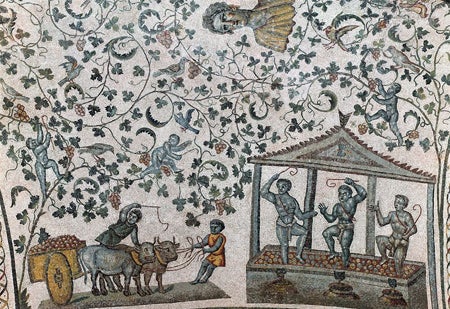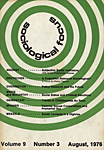Teaching with Artstor: We Are What We Ate (and Drank)

Wine Making (Vine Shoots, Putti Gathering Grapes and Male Bust; Grape-gathering Cupids); detail | c. 350 CE | Chiesa di S. Costanza (Rome, Italy) | Image and original data provided by SCALA, Florence/ART RESOURCE, N.Y. ; artres.com ; scalarchives.com | (c) 2006, SCALA, Florence / ART RESOURCE, N.Y.
Gregory K. Martin, Ph.D.
Upper School Director, La Jolla Country Day School
In a compelling study of Western United States history, Patricia Nelson Limerick quotes Nannie Alderson, a former Virginian who moved to Montana in 1883. Alderson, looking back on a unique feature of her experience, recollected that there was on the frontier an abundance of cans: “Everyone in the country lived out of cans […] and you would see a great heap of them outside every little shack” (“Closing the Frontier and Opening Western History”).

Egyptian | Slave making beer from Giza | c. 2690-2130 BCE | Egyptian Museum of Cairo | Image and original data provided by SCALA, Florence/ART RESOURCE, N.Y. ; artres.com ; scalarchives.com | (c) 2006, SCALA, Florence / ART RESOURCE, N.Y.
So often, historical surveys in high school and college focus on conflict, whether it be active martial conflict (wars and coups, for example) or conflict resolution (codes of law or the individuals who bring long periods of peace and prosperity or conquest). Dates, wars, and heroes (or villains), certainly not cans, outline the course of human history for most students today. History, they say, belongs to the victors, and for many years, the telling of history has involved the narratives of winners and losers. More recently, however, historians have also begun to explore the quotidian, especially as it pertains to the masses.
Tom Standage, author of A History of the World in Six Glasses, argues that at each major epoch in human history, drinks were responsible for great shifts in the human experience. “Drinks,” he writes, “[…] shape human history.” Human beings needed vessels to store food and drink, mix water and wine, ship excess supplies around the Mediterranean and other navigable seas and rivers. So begins a cycle that links the most basic human needs—food and drink—with the stratification of laborers and leaders, systems of economics, ritual sacrifices, and another evolution in artistic expression.
Statues, vessels, cups, mixing bowls, and all manner of artifacts related to agriculture, and food and drink production and consumption, all serve to facilitate an exploration of the relationships of early civilized human beings with their most basic needs and the related social, religious, economic, and, yes, military systems.
In my previous position at Cincinnati Country Day School, the Artstor Digital Library enabled ninth-graders to link art and artifacts to historical readings (Standage, Jared Diamond, standard historical secondary texts, and many primary sources, not to mention Homer and Lao-Tsu), discussions, and projects. I created a series of image groups in Artstor to help students begin a journey through Mesopotamian, Egyptian, Greek, Roman, Chinese, and Indian art that is linked to the daily experience of eating and drinking. A better lens with which we can all view the past enabled me to shift the focus away from teaching to learning. Students explored, analyzed, classified, and discussed a wide variety of food and drink tools and vessels and the very unique and interesting attempt to beautify archaic “cans.” It is a powerful tool in the ongoing attempt to create more student-centered experiences. Students eventually understand the powerful link between beautiful forms and important functions and how we are—and were—what we eat.



